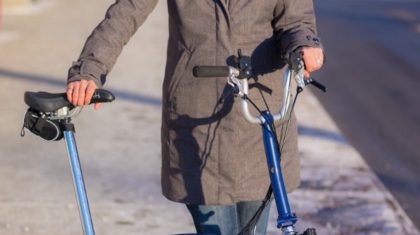
By John Catoe, PE, LEED AP, Engineer, Alta Planning + Design
What’s the best way to stress the importance of what you do to your elected officials? I was presented with a unique opportunity to travel to Washington, DC, and discuss infrastructure with our federal elected leaders and representatives via the American Society of Civil Engineers Legislative Fly-in Program.
We are fortunate that we work in a sector that is considered necessary and bipartisan (for the most part) but that doesn’t translate into world-class public works. With a few exceptions, even an anecdotal visual comparison confirms that the US is trailing many other highly industrialized countries. So if local, state, and especially federal politicians are all vocal supporters of infrastructure (especially now), then why are we so deficient? I can’t say I have the answer to my own question, but I can give you some perspective on what it’s like to fight for these issues face-to-face with our representatives.
Every four years, the American Society of Civil Engineers (ASCE) releases their Infrastructure Report Card. It seeks to give a simple A through F grade to broad categories that make up the US’ civil public works. This year, our teacher, ASCE, reported that we earned an overall D+. ASCE relies on volunteer members to participate in their annual Legislative Fly-In where members from (ideally) every state in the country “fly-in” to DC to meet with the representatives, report the current status of our infrastructure, and then campaign for some specific legislative items. This was my first year participating in the Fly-In, and I hope to be part of it for the next few years — I think it will take that long to really see any discernible progress.

We kicked off the day with a prep talk and some coaching. Representative Earl Blumenauer (3rd Congressional District of Oregon, hometown of Portland) gave the morning keynote stressing the importance of our mission for the Fly-In and professional charge as civil engineers. He made a case for individual action, especially apart from the Fly-In, asking, “What are you doing at home?” He suggested hosting a town hall for infrastructure and referred to infrastructure as the ultimate bipartisan initiative. He noted that we have part of our country that resemble a 3rd world country and there are no boundaries for pollution. A member asked the representative how to handle skepticism regarding transit for rural areas. The congressman responded by sharing AARP statistics: the average American woman will outlive their ability to drive a vehicle by 11 years. The average American man will outlive their ability to drive by 7 years. Transit will become a necessity if we want to ensure quality of life for aging Americans. Blumenauer finished on a positive note when asked about the rise of bike lanes and multimodal travel, stating that the federal government has put $8 billion into bike infrastructure, and he noted that the ability to cycle safety is an indicator of a healthy community.
We were coached up on four specific issues to discuss with our representatives: pass the fiscal year 2017 and 2018 spending bills (this includes a lot of money for transportation funding that’s already been authorized), continue to financially support State Revolving Funds for Clean Water and Drinking Water, support National Dam Safety Program, National Levee Safety Programs, & High Hazard Dam Rehabilitation Program, and to continue to support the tax-exempt status for municipal bonds. Our South Carolina team of three engineers (transportation, structural, and geotechnical) had prescheduled appointments with our representatives. Although we didn’t meet any representatives themselves, we met with staffers from Representative Clyburn’s office, Representative Gowdy’s office, Representative Sanford’s office, Senator Graham’s office, and Senator Scott’s office. All of the discussions were very cordial, but it did seem like a crazy day on Capital Hill — various political action groups were making unannounced stops in congressional offices, healthcare was being debated, and the President’s budget was due out the day after our meetings. Everyone we met with vocally supported the need for improved infrastructure but everyone has question about how to pay for it. When pressed on the specific items we wanted to move forward the response was the same — vocal support but inability to commit because of stresses on reduced funding. The one exception was the tax-exempt status for municipal bonds; everyone but one representative was in firm support.






While I believe the effort was worthwhile, despite a lack of hard commitments, I do think that in order to see tangible results, continued effort is needed. I plan on participating in the Legislative Fly-In next year. I’m hopeful that through more advanced coordination and pressure, we can meet with the representatives themselves. I also want to do a “Fly-In” at the state and local level. I am confident that state and local meetings would result in direct results much sooner. As Representative Blumenauer asked, “What are you doing at home?” If you want to see a nation change, start in your own backyard.


